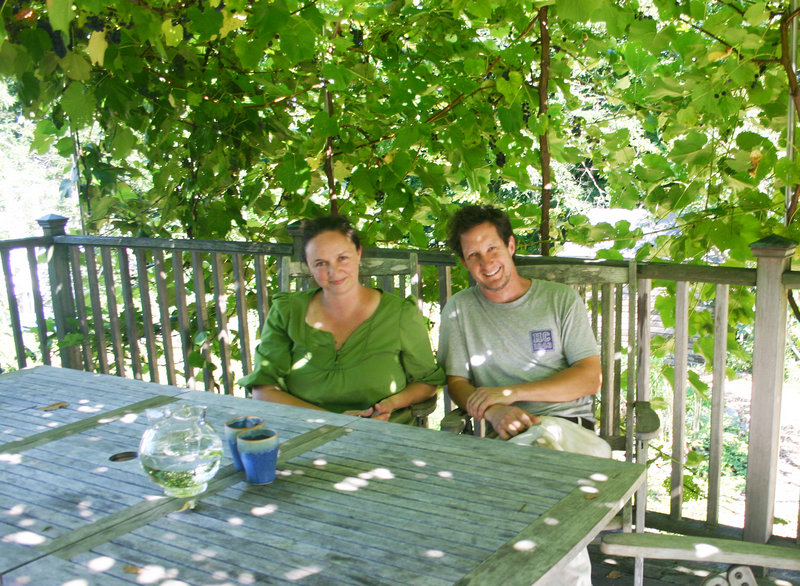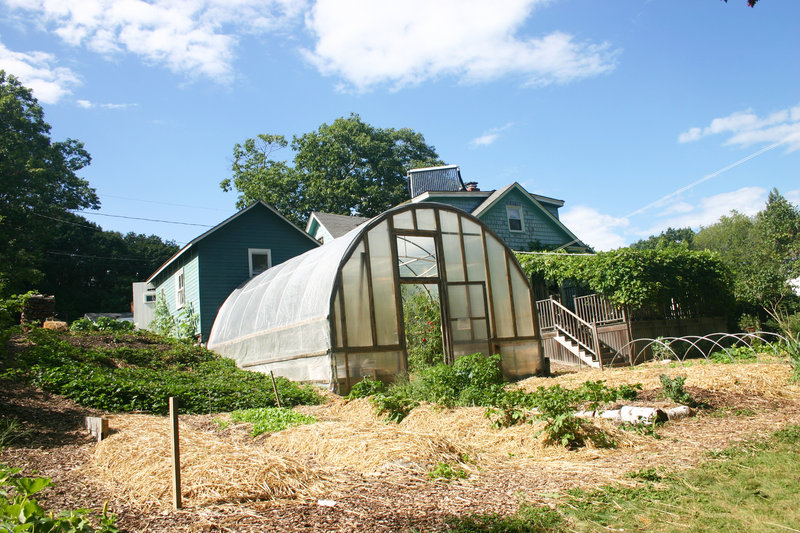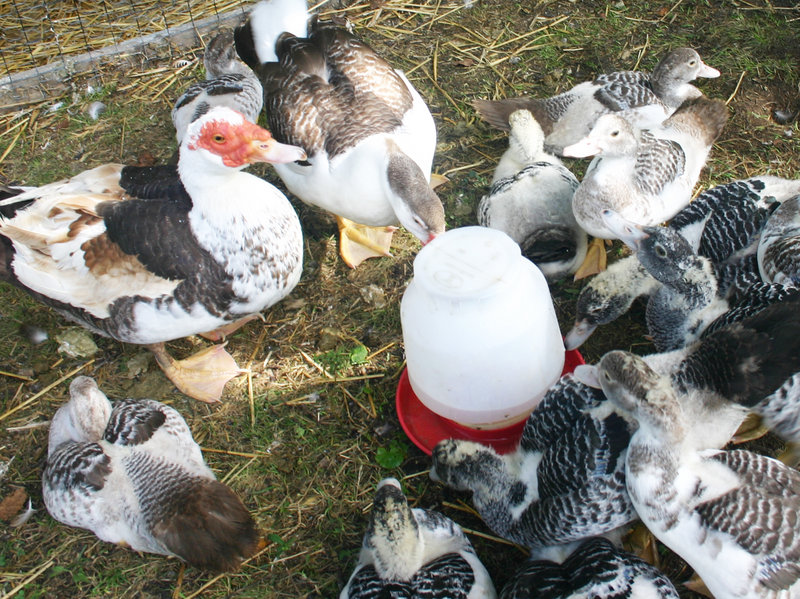Lisa Fernandes samples an Italian pole bean from the vine outside her home, while on the deck nearby a solar oven is slowing converting fresh tomatoes to tomato paste. The process will take about a day and a half in full sun, without the aid of electricity or natural gas.
Steps away at the back of the garage is an unheated greenhouse, where tomatoes, eggplants, melons and cucumbers ripen in the late summer heat. Soon these will be harvested and the beds readied for the 12 varieties of cold hardy salad greens that flourish in the winter in the enclosed space warmed only by the sun.
On a slope outside the greenhouse, strawberry plants cover the hill and raspberry canes grow nearby.
“We never have to buy jam again,” Fernandes says.
Tucked into a typical suburban neighborhood in Cape Elizabeth where lawns and flower beds dominate the landscape, Fernandes and her husband, David Whitten, have done away with their lawn and packed their third of an acre lot, just two houses from the South Portland line, with a growing backyard farm.
“It’s not what you’d call an orderly, traditional garden,” Fernandes admits. “This was all lawn and loads of conifers. We’ve gradually removed the conifers. We’ve used all the wood chips on site and milled the lumber.”
Fernandes, who heads the Portland Permaculture Meetup, and Whitten, who runs the solar hot water firm Resiliant Homes, bought the property in 2003. Motivated by concerns about the waning days of cheap oil and a desire to live a more sustainable lifestyle, the pair began implementing a permaculture landscape design soon after they moved in.
The first projects they tackled included planting fruit trees, nut trees and berries, since it often takes a number of growing seasons before these perennials bear fruit.
“In permaculture, you’re really trying to create a property that takes care of you more than you take care of it,” Fernandes explains. “We’re trying to mimic the way nature creates fertility.”
This mimicry started when they eliminated the lawn by covering it with wood chips. The process continues as they add layers of mulch, much like a forest accumulates layers of debris. They also forgo tilling, allowing the soil structure and its crucial microbes to stay intact.
Unlike giant farms in the heartland that let their once deep Great Plains soil slip away each year due to reliance on heavy tilling, little use of cover crops and constant applications of petro-chemical fertilizers and pesticides, permaculture aims to enrich the soil so it can be cultivated indefinitely with both annuals and perennials.
“At some point, one-half to two-thirds of the food we get off this property will be perennial,” Fernandes says.
Where there once was a thick barrier of evergreen trees between the property and a neighboring house, there is now a 64-foot-long apple espalier. This traditional European technique trains the trees through guideposts and pruning to grow thin and tall in the shape of a fence.
The growing fence contains two each of four different varieties of apples. Once the trees bear fruit, some of the apples will be perfect for desserts and others will store well through the winter.
“In a few more years, we’ll pull out the posts and the wire,” Fernandes says.
Watching all the unusual transformations on the Fernandes-Whitten property, the neighbors have been replacing ornamentals with edibles and adding solar hot water systems. One neighbor who was tired of mowing her back lawn agreed to let the couple use the space to raise Muscovy ducks, in exchange for eggs and meat.
“Muscovy ducks are quackless and really well-known for being good meat birds,” Fernandes said. “They’re really good for slug and snail control, too.”
Right now, Whitten has been harvesting some of the ducks and he will continue to do so into the fall, with the intention of keeping nine ducks through the winter.
There are no synthetic chemical fertilizers used on this plot of sloping land. Instead, a number of natural inputs boost the soil’s fertility. These include duck manure, grass clippings from neighboring homes, leaves, dried comfrey plants, seaweed and horse manure from local farms.
Water for the gardens comes from a string of eight rain barrels, which fill to overflowing when more than an inch of rain falls. Next to an herb spiral, pollinators and natural insect controls, such as frogs, are attracted to a small pond.
On the roof of the house, a solar array provides the home with hot water. Below the solar system sits a large deck, shaded from the sun by grape vines heavy with fruit. Up until last week, Fernandes had been making stuffed grape leaves and pickled grape leaves, but now she’s turning her attention to fresh eating (the Bluebell variety bursts with a quintessential grape flavor) and jam.
“Part of the secret with the grapes is we grow nitrogen-fixing peas in the root zone,” Whitten says as we all snack on the juicy Bluebells.
The narrow grape bed also provides a home to Brussels sprouts and garlic, which aids in pest control.
In the future, the husband and wife team and their 3-year-old son, Rowan, intend to add chickens and rabbits to their backyard farm, build an outdoor wood-fired oven, plant edible water vegetation and cultivate more medicinal plants.
“We’re converting it as time and energy allows,” Fernandes says. “The biggest work with a permaculture garden is in the first few years. I feel we’re about halfway to getting it established.”
Staff Writer Avery Yale Kamila can be contacted at 791-6297 or at: akamila@pressherald.com
Send questions/comments to the editors.





Success. Please wait for the page to reload. If the page does not reload within 5 seconds, please refresh the page.
Enter your email and password to access comments.
Hi, to comment on stories you must . This profile is in addition to your subscription and website login.
Already have a commenting profile? .
Invalid username/password.
Please check your email to confirm and complete your registration.
Only subscribers are eligible to post comments. Please subscribe or login first for digital access. Here’s why.
Use the form below to reset your password. When you've submitted your account email, we will send an email with a reset code.